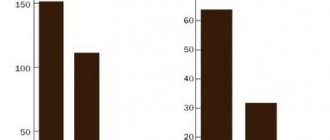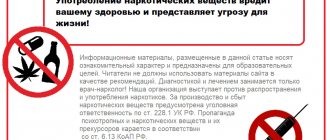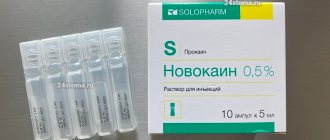Caffeine and its artificial analogue (sodium benzoate, preservative E-211), used in the food industry, can cause deterioration in health. With regular and excessive consumption of coffee drinks and products containing caffeine (for example, energy drinks), there is a high probability of developing pathologies of the gastrointestinal tract, central nervous system and cardiovascular system.
Long-term consumption of coffee is the cause of gastritis, colitis, stomach ulcers, hypertension, as well as some neurological and mild mental disorders. Therefore, depending on the consequences of excessive coffee consumption, a cardiologist, gastroenterologist, neurologist, neuropsychiatrist or psychotherapist may be involved in the treatment of caffeine addiction.
In the absence of somatic pathology, treatment for caffeine addiction in our clinic is carried out by psychotherapists or hypnologists. On the recommendation of a doctor, the course of treatment can be supplemented with sessions of relaxation therapy, therapeutic massage or acupuncture.
People who abuse coffee often experience some of the symptoms of caffeine overdose: insomnia, frequent headaches, dizziness, nervousness, mild excitability and increased anxiety.
Symptoms of caffeine overdose
Unfortunately, drinking coffee has become a habitual ritual for many. In an attempt to get themselves into working condition as quickly as possible, people turn to coffee almost immediately after sleep. However, the negative consequences of such a habit will not be long in coming.
Often the symptoms of a caffeine overdose are perceived by people as negative consequences of daily stress, anxiety and an unsettled lifestyle:
- insomnia;
- depression;
- nervousness and irritability;
- increased anxiety.
To a lesser extent, symptoms of caffeine overdose include frequent urination (enuresis), fluctuations in blood pressure, increased body temperature, heartburn, nausea, diarrhea, deterioration of the skin (caused by dehydration), vision problems and dizziness.
Caffeine-containing drinks are recommended to be consumed with caution by people with increased nervous excitability, cardiac arrhythmia, peptic ulcer, gastritis, atherosclerosis and glaucoma.
Rice. 1. Caffeine content in coffee and tea.
Description of the drug CAFFEINUM-NATRII BENZOAS
Psychostimulant and analeptic drug, a derivative of methylxanthine. Competitively blocks central and peripheral A1 and A2 adenosine receptors. Inhibits the activity of PDE in the central nervous system, heart, smooth muscle organs, skeletal muscles, adipose tissue, promotes the accumulation of cAMP and cGMP in them (this effect is observed when used only in high doses). Stimulates the centers of the medulla oblongata (respiratory and vasomotor), as well as the n.vagus center, has a direct stimulating effect on the cerebral cortex. In high doses, it facilitates interneuronal conduction in the spinal cord, enhancing spinal reflexes.
Increases mental and physical performance, stimulates mental activity, motor activity, shortens reaction time, temporarily reduces fatigue and drowsiness. In small doses, the stimulating effect predominates, and in large doses, the effect of depression of the nervous system predominates.
Speeds up and deepens breathing. Usually it has a positive ino-, chrono-, bathmo- and dromotropic effect (since the effect on the cardiovascular system consists of a direct stimulating effect on the myocardium and a simultaneous stimulating effect on the n.vagus centers, the resulting effect depends on the predominance of one or another action). Stimulates the vasomotor center and has a direct relaxing effect on the vascular wall, which leads to dilation of the vessels of the heart, skeletal muscles and kidneys, while the tone of the cerebral arteries increases (causes a narrowing of the blood vessels of the brain, which is accompanied by a decrease in cerebral blood flow and oxygen pressure in the brain).
Blood pressure changes under the influence of vascular and cardiac mechanisms of caffeine influence:
- with normal initial blood pressure, caffeine does not change or slightly increases it; with arterial hypotension, it normalizes it.
It has an antispasmodic effect on smooth muscles (including a bronchodilator effect), and a stimulating effect on striated muscles.
Increases the secretory activity of the stomach.
It has a moderate diuretic effect, which is due to a decrease in the reabsorption of sodium and water ions in the proximal and distal renal tubules, as well as dilation of renal vessels and increased filtration in the renal glomeruli.
Reduces platelet aggregation and histamine release from mast cells.
Increases basal metabolism:
- increases glycogenolysis, increases lipolysis.
What to do if you overdose on caffeine
People who lead a hectic lifestyle and have health problems are more susceptible to symptoms of caffeine overdose. If you feel unwell (for example, with a sharp increase in blood pressure, high heart rate and dizziness) due to excessive consumption of caffeine-containing drinks, you must provide first aid and call a doctor.
To avoid possible death, you need to know what to do if you overdose on caffeine. We also advise you not to neglect calling a doctor, since at first glance, a slight deterioration in health may be a signal of a serious disruption in the functioning of the cardiovascular system.
Treatment of caffeine overdose
If possible, have someone nearby and follow the guidelines for treating caffeine overdose until doctors arrive:
- loosen your tie and/or belt;
- loosen tight clothing;
- open a window or go out into the fresh air;
- drink clean water until completely saturated;
- do not hold back your gag reflex.
Further treatment of caffeine overdose will be carried out by doctors. If the current state of health upon examination raises concerns among physicians, treatment of caffeine overdose will need to be performed in a medical facility. It may include gastric lavage, intravenous administration of magnesium sulfate, diprazine and morphine hydrochloride, as well as drugs to reduce agitation and normalize the functioning of internal organs. In severe cases, plasma substitutes are used to treat caffeine overdose.
Rice. 2. The ratio of patients with pathology of the cardiovascular system per 100 thousand population in the Russian Federation (according to Rosstat).
CAFFEINE-SODIUM BENZOATE, SOLUTION FOR INJECTION 200MG/ML 1ML No. 10
Caffeine is a methylxanthine that has a psychostimulating and analeptic effect. Competitively blocks central and peripheral A1 and A2 adenosine receptors. It inhibits the activity of phosphodiesterase in the central nervous system, the heart, smooth muscle organs, skeletal muscles, adipose tissue, and promotes the accumulation of cyclic adenosine monophosphate (cAMP) and cyclic guanosine monophosphate (cGMP) in them (this effect is observed when using only high doses of caffeine). Stimulates the centers of the medulla oblongata (respiratory and vasomotor) and the n.vagus center has a direct stimulating effect on the cerebral cortex. In high doses, it facilitates interneuronal conduction in the spinal cord, enhancing spinal reflexes.
Increases mental and physical performance, stimulates mental activity, motor activity, shortens reaction time, temporarily reduces fatigue and drowsiness. In small doses, the stimulating effect predominates, and in large doses, the effect of depression of the nervous system predominates. It quickens and deepens breathing usually has a positive inochrono-batmo- and dromotropic effect (since the effect on the cardiovascular system (CVS) consists of a direct stimulating effect on the myocardium and a simultaneous stimulating effect on the n.vagus centers; the resulting effect depends on the predominance of one or another action ). Stimulates the vasomotor center and has a direct relaxing effect on the vascular wall, which leads to dilation of the heart vessels of skeletal muscles and kidneys, while the tone of the cerebral arteries increases (causes a narrowing of the blood vessels in the brain, which is accompanied by a decrease in cerebral blood flow and oxygen pressure in the brain). Blood pressure (BP) changes under the influence of vascular and cardiac mechanisms of caffeine's influence: with normal initial blood pressure, caffeine does not change or slightly increases it; with arterial hypotension, it normalizes it.
It has an antispasmodic effect on smooth muscles (including a bronchodilator effect) and a stimulating effect on striated muscles. Increases gastric secretory activity and diuresis (decreased reabsorption of sodium ions and water in the proximal and distal renal tubules, as well as dilation of renal vessels and increased filtration in the renal glomeruli).
Reduces platelet aggregation and histamine release from mast cells. Increases basal metabolism: increases glycogenolysis increases lipolysis
Effect of caffeine on the body
Adenosine receptors in the brain are responsible for suppressing excitation. The ability to block adenosine receptors is the main property of caffeine (the caffeine molecule is similar to adenosine), which determines its invigorating effect. In turn, the breakdown of glycogen under the influence of caffeine molecules helps to release additional energy by raising blood sugar levels. In addition, caffeine also increases the concentration of leptin in the blood, which reduces appetite and increases energy expenditure.
The invigorating effect of caffeine directly depends on its amount. Small doses of caffeine are found in tea (up to 45 mg per cup) and instant coffee (up to 70 mg per serving); roasted beans are more saturated with caffeine (up to 115 mg per serving). Separately, it is worth noting energy drinks, the caffeine content of which can reach 250 mg per can. Thus, excessive consumption of energy drinks poses an increased risk of developing cardiovascular diseases, gastrointestinal diseases, and in some cases leads to premature death (cardiac arrest).
Relatively safe dosage of caffeine
Russian regulatory authorities have established a recommendation for daily caffeine consumption. A relatively safe dosage in our country is considered to be the total number of caffeine-containing drinks consumed, not exceeding a total daily dosage of 150–300 mg of caffeine: in terms of cups of tea - no more than 5, per serving of coffee - no more than 3. In the European Union, the EFSA has established a maximum The permissible daily dosage of caffeine is 400 mg, and the maximum single dose is 200 mg.
The effect of caffeine on the female body
The female body is most sensitive to caffeine overdose. Against the background of coffee and energy drink abuse, women have an increased risk of developing breast cancer and osteoporosis, and during pregnancy, a decrease in blood flow to the placenta, increased heart rate in the fetus, premature birth and miscarriage.
Regularly exceeding the recommended dosage inevitably leads to caffeine overdose, the risk of somatic and mental illnesses, and in some cases, psychological dependence on caffeine.
Share
Share
Caffeine
pharmachologic effect
Psychostimulant and analeptic drug, a derivative of methylxanthine. Competitively blocks central and peripheral A1 and A2 adenosine receptors. Inhibits the activity of PDE in the central nervous system, heart, smooth muscle organs, skeletal muscles, adipose tissue, promotes the accumulation of cAMP and cGMP in them (this effect is observed when used only in high doses). Stimulates the centers of the medulla oblongata (respiratory and vasomotor), as well as the n.vagus center, has a direct stimulating effect on the cerebral cortex. In high doses, it facilitates interneuronal conduction in the spinal cord, enhancing spinal reflexes.
Increases mental and physical performance, stimulates mental activity, motor activity, shortens reaction time, temporarily reduces fatigue and drowsiness. In small doses, the stimulating effect predominates, and in large doses, the effect of depression of the nervous system predominates.
Speeds up and deepens breathing. Usually it has a positive ino-, chrono-, bathmo- and dromotropic effect (since the effect on the cardiovascular system consists of a direct stimulating effect on the myocardium and a simultaneous stimulating effect on the n.vagus centers, the resulting effect depends on the predominance of one or another action). Stimulates the vasomotor center and has a direct relaxing effect on the vascular wall, which leads to dilation of the vessels of the heart, skeletal muscles and kidneys, while the tone of the cerebral arteries increases (causes a narrowing of the blood vessels of the brain, which is accompanied by a decrease in cerebral blood flow and oxygen pressure in the brain).
Blood pressure changes under the influence of vascular and cardiac mechanisms of caffeine's influence: with normal initial blood pressure, caffeine does not change or slightly increases it; with arterial hypotension, it normalizes it.
It has an antispasmodic effect on smooth muscles (including a bronchodilator effect), and a stimulating effect on striated muscles.
Increases the secretory activity of the stomach.
It has a moderate diuretic effect, which is due to a decrease in the reabsorption of sodium and water ions in the proximal and distal renal tubules, as well as dilation of renal vessels and increased filtration in the renal glomeruli.
Reduces platelet aggregation and histamine release from mast cells.
Increases basal metabolism: increases glycogenolysis, increases lipolysis.
Bibliography:
- Zainullin Radik Anvarovich, Kunakova Raikhana Valiulovna, Egorova Elena Yuryevna Coffee, caffeine and human genetics // Beer and drinks. 2015.
- Kozachuk Irina Valerievna The influence of caffeine on cerebral circulation // Bulletin of Russian Universities. Mathematics. 2010.
- Kozachuk Irina Valerievna On the question of the physiological effects of caffeine on the human body // Bulletin of Russian Universities. Mathematics. 2009.
- Popova A.K., Kobzarenko E.E., Legotkina A.D. Addictive potential and neurotoxicological profile of caffeine and caffeine-containing drinks // Pharmacogenetics and pharmacogenomics. 2017.
- Why does coffee invigorate you? Physiologist Vyacheslav Dubynin about mild psychomotor stimulants, reasonable levels of caffeine and adenosine receptors.
- Caffeine. Material from Wikipedia - the free encyclopedia.
- Caffeine. RLS – Register of Medicines of Russia.
- Caffeine sodium benzoate. Registration certificate. State register of medicines.
- Caffeinism. From Wikipedia, the free encyclopedia.



